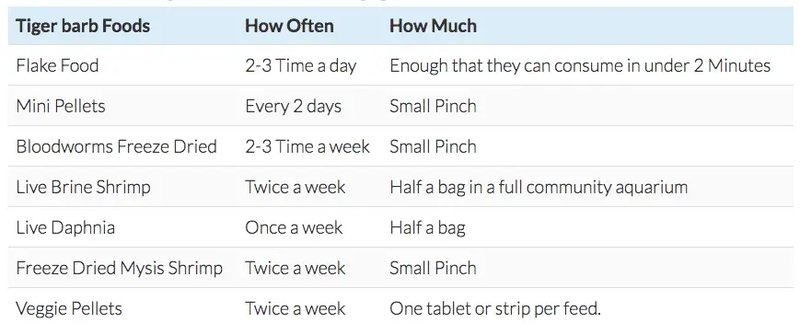
Barbs, like the popular Tiger Barb or the Cherry Barb, are lively little swimmers that thrive in various aquatic environments. They aren’t picky eaters, which can make feeding them easier. However, it’s crucial to know what to feed them, how often, and the right nutrition to keep them in tip-top shape. If you’re a beginner or curious about feeding your barbs the best possible diet, let’s dive into what you need to know!
Understanding the Basics of a Barb’s Diet
Barbs are omnivores, which means they enjoy a mix of both plant-based and protein-rich foods. This flexibility is great because it allows you to offer them a variety of foods. Think of it this way: just like you don’t want to eat the same meal every day, your barbs will appreciate some variety on their plate too!
You’ll want to ensure their meals include high-quality fish flakes for everyday feeding, as these are specially formulated to meet their nutritional needs. Along with flakes, consider supplementing with live or frozen foods like brine shrimp, daphnia, or bloodworms. Not only do these add excitement to their diet, but they also provide essential proteins and nutrients that help them thrive.
Feeding Schedule for Barbs
When it comes to feeding your barbs, a regular schedule is key. Fish thrive on routine, and a consistent feeding time can help reduce stress. Generally, feeding them twice a day is a good rule of thumb. You might think about it like planning your meals: breakfast and dinner to keep energy levels up!
Each feeding session should consist of a small amount of food that they can consume within 2-3 minutes. If you notice leftover food floating around after feeding, you might be giving them too much. This can lead to water quality issues, which we definitely want to avoid. Remember, it’s better to feed them smaller amounts more frequently than to overfeed.
Types of Foods for Barbs
Now that you know how often to feed your barbs, let’s take a closer look at the types of foods that work best for them. Here’s where you can get creative and have a bit of fun!
- High-Quality Flakes: These are your barbs’ daily bread. Choose flakes that are specifically formulated for community fish.
- Frozen and Live Foods: Occasionally treat your barbs to frozen peas, bloodworms, or live brine shrimp. These foods can make feeding time much more exciting!
- Vegetables: Blanched zucchini, spinach, or cucumbers can be a hit. Just make sure to chop them into manageable pieces for your fish.
- Pellets: Some barbs may enjoy sinking pellets, which can be a great addition to their diet.
Each of these food types offers a different texture, flavor, and nutritional value. Mixing and matching can keep your barbs content and healthy.
Nutritional Requirements for Healthy Growth
Providing the right nutrition to your barbs goes beyond just filling their tummies. You want to make sure they have all the nutrients they need to grow, thrive, and display those vibrant colors. Here’s what to focus on:
– Proteins: Essential for growth and overall health. Look for foods with a high protein content, especially during their growth phase.
– Carbohydrates: While fish don’t need as many carbohydrates as we do, a small amount can provide energy. Flakes and some veggies can meet this need.
– Vitamins and Minerals: Essential for a strong immune system. Vitamins A, C, and D3 are particularly important. Quality fish food usually contains balanced vitamins, but it’s worth checking.
Providing a balanced diet helps ensure your barbs are not just surviving, but thriving. You might feel like a chef in your little aquatic kitchen, creating the best meals for your fish friends!
Avoiding Overfeeding: The Silent Killer
It’s super easy to overfeed your barbs, especially when they look at you with those adorable curious eyes. However, overfeeding can be harmful. It can lead to several issues like poor water quality, which can, in turn, result in health problems for your fish.
Here’s how to avoid it:
– Stick to the 2-3 minute rule.
– Assess their behavior. If they leave food uneaten, cut back on portions.
– Monitor water conditions regularly. If you notice cloudy water or excess waste, you might be overdoing it.
Being mindful of your feeding habits is just as important as what you feed your barbs.
Special Dietary Needs for Different Barb Species
Not all barbs are created equal, and different species can have unique dietary needs. For example, Cherry Barbs may thrive on a diet rich in greens, while Tiger Barbs may lean toward a protein-heavy diet.
Understanding these nuances can help you craft the ideal menu for your specific type of barb. Research your particular species, and you might just find that they require different food types or more frequent feeding based on their natural habitat.
Nutrition Tips for Happy Barbs
Now that you’ve got the basics down, let’s round off with some nutrition tips to keep your barbs happy and healthy:
1. Variety is Key: Rotate between different food types like flakes, pellets, and live or frozen options to keep things interesting.
2. Fresh Foods: Occasionally including fresh vegetables can make a big difference in their diet and health.
3. Quality Matters: Always choose high-quality brands. Just like us, fish benefit from good nutrition.
4. Observe Their Behavior: Pay attention to how they react to different foods. It will give you insights into what they prefer.
In conclusion, feeding your barbs can be a rewarding experience. With the right knowledge, care, and attention to their dietary needs, you’ll not only keep them healthy but also provide an engaging environment. So, roll up your sleeves, get to know your little fish buddies, and enjoy the journey of being their caretaker!
